Emperor penguins are extraordinary creatures. They spend their entire lives in Antarctica, which means raising young in the depths of the most brutal winter on the planet. Temperatures plummet to -55˚C and the icy landscape is battered by blizzards that rage for days, even weeks. No other species has the capacity to tough out winter here.
Read on to find out how these penguins cope in the cold and how parents work together to raise their young.
Where do emperor penguins live?
Emperor penguins are only found in Antarctica, the far southern reaches of the world, where they live in large colonies on sea ice.
How many emperor penguins are there?
There are thought to be 500-600,000 adults across 54 colonies. But there is still a lot we don't know about them - Antarctica is a very remote place.
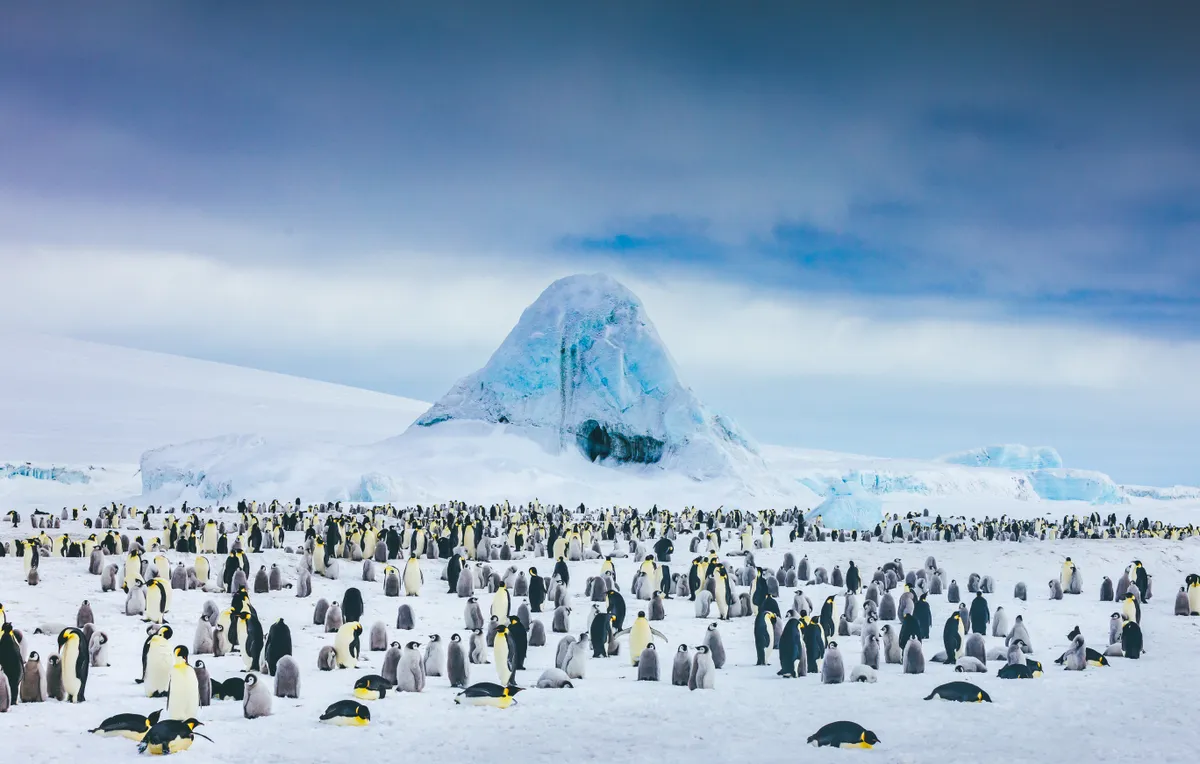
How tall is an emperor penguin?
They are the biggest of all 18 penguin species, standing approximately 120cm tall.
How do emperor penguins stay warm?
Emperor penguins are well adapted to the cold. Adults are insulated by several dense layers of scale-like feathers. These are kept waterproof and windproof with frequent preening, using oil from a gland at the base of the tail.
Their beaks and flippers are also proportionally small, to reduce heat loss. But it's not just physical attributes that help emperors survive. The birds form remarkably complex bonds that help them to raise their chicks, and work as a team to huddle for warmth.
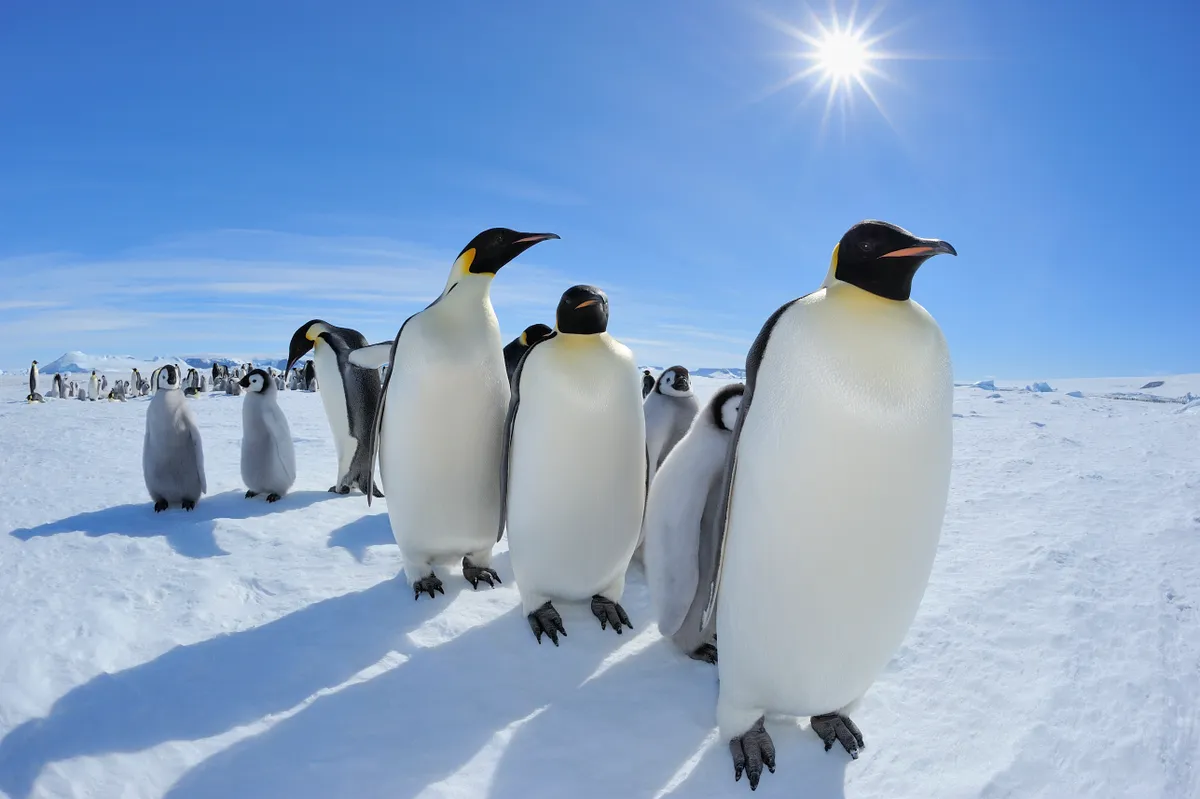
How do their feet not freeze?
Emperors have strong and sturdy feet, with large, gripping claws to help propel them across the ice. Blood vessels are arranged so that there is a counter-current heat exchange between warm and cold blood.
What do emperor penguins eat?
Fish, fish and more fish, particularly Antarctic silverfish. And krill. Emperors are superb divers, hunting at depths of around 100-250m (though one individual has been recorded diving to more than 500m!). The penguins must swim and dive fast when hunting to escape predatory leopard seals.
What is the emperor penguin life-cycle?
Typically, emperors spend January to March feeding at sea, building up fat reserves for the impending winter. In April, they 'march' in a long line to the colony to breed, a journey of more than 100km. They mate in May, with eggs laid in June and July. Chicks hatch in August and are fed by their parents until November. In December, when the ice breaks up, the chicks fledge and make their way to the sea.
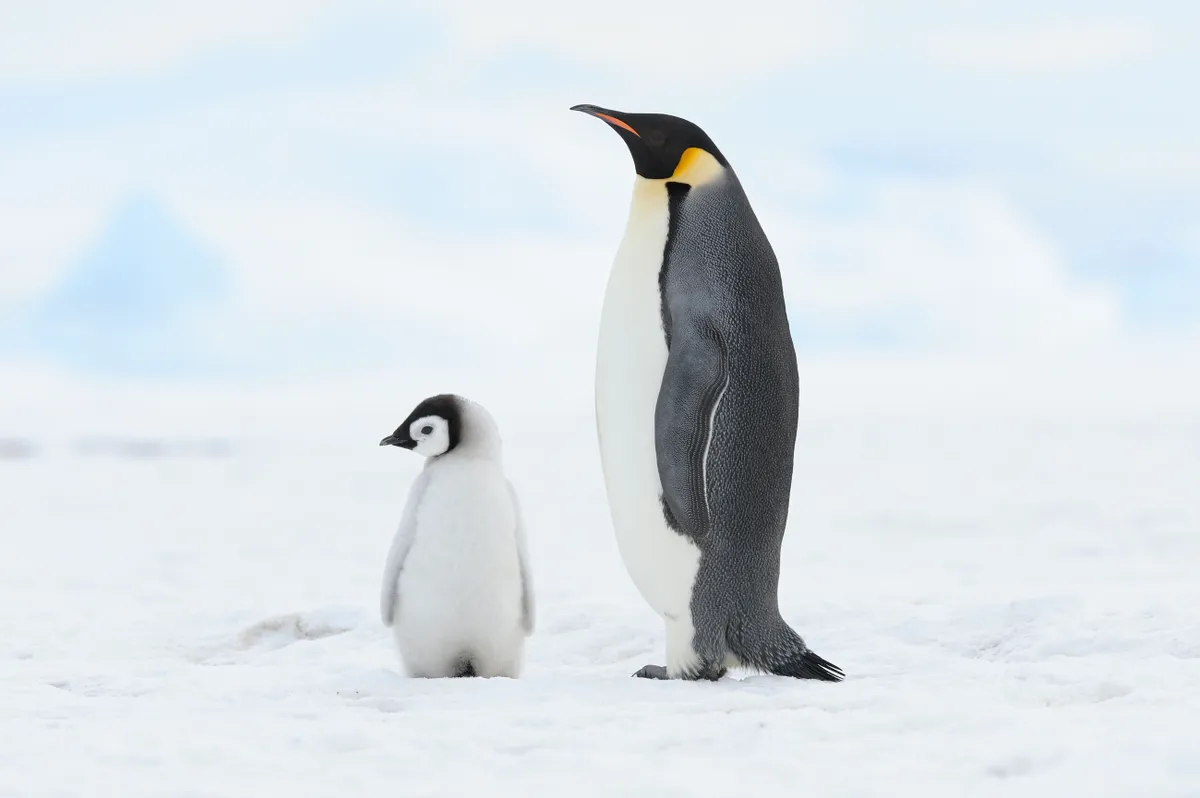
How do emperor penguins find a mate?
Emperor penguins find a new mate each year. The colony fills with noise and movement as males and females appraise each other. When a pair is established, the partners perform a graceful ritual of bowing, preening and calling, which affirms the pair-bond.
How do emperor penguins care for their young?
Once a female lays her egg, she must return to the sea to feed. Pregnancy is demanding and she will be starving. She must thus entrust her mate with care of her offspring. A female can often be reluctant to leave her egg, and the male works hard to persuade her, lowering his head to her feet and mirroring her calls until she relinquishes her precious cargo. He is now sole guardian of the hatchling-to-be and must keep it alive through the Antarctic winter. He has a special flap of warm skin, called a brood pouch, that keeps the egg warm as it balances on his feet.
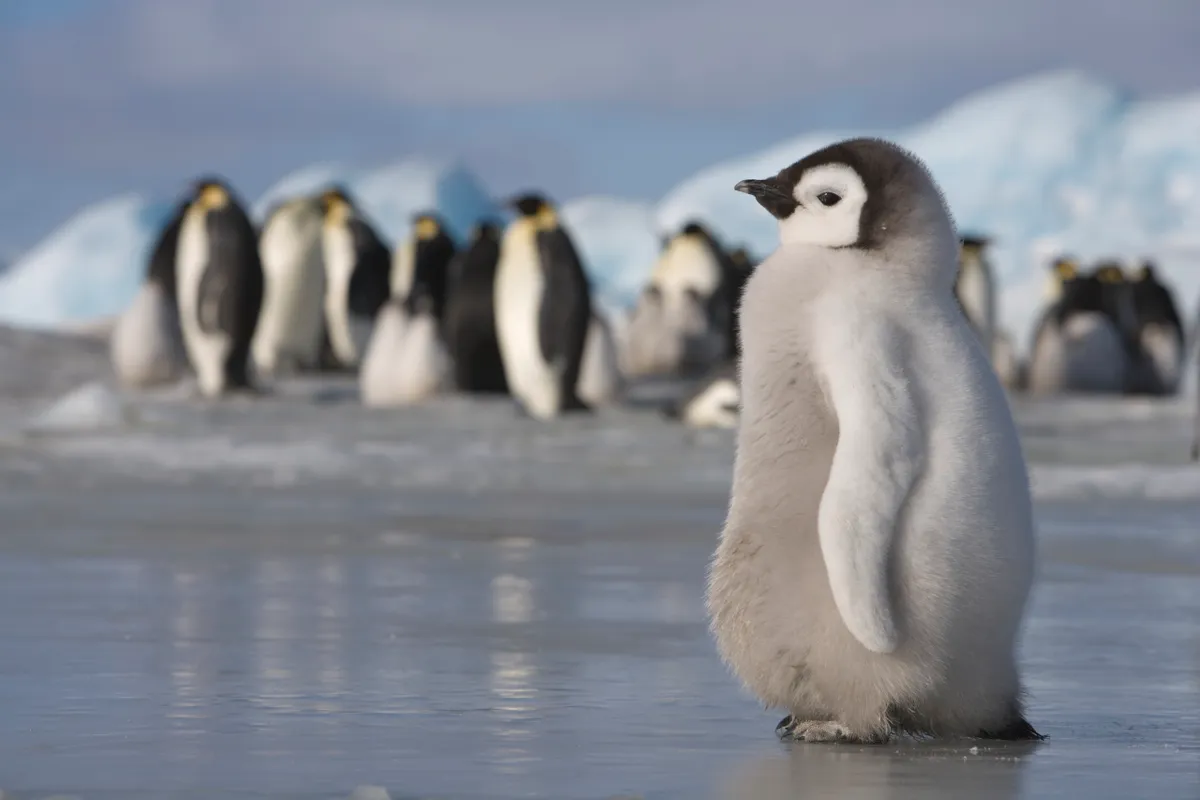
What if the male drops the egg?
It will probably freeze and the youngster inside will die. So, great care is taken when passing the egg from female to male.
What is the emperor penguin huddle?
As winter descends, the males are now guarding their eggs alone and need to stay warm. So, they huddle together in enormous, tight-knit groups - a spectacular example of trust and teamwork in the animal kingdom - shuffling position so they all get a turn in the middle. The insulating effect of their tightly packed bodies is so effective that the temperature at the core of the huddle can hit 35˚C. At this point the pack breaks open, and clouds of steam are thrown into the freezing air.
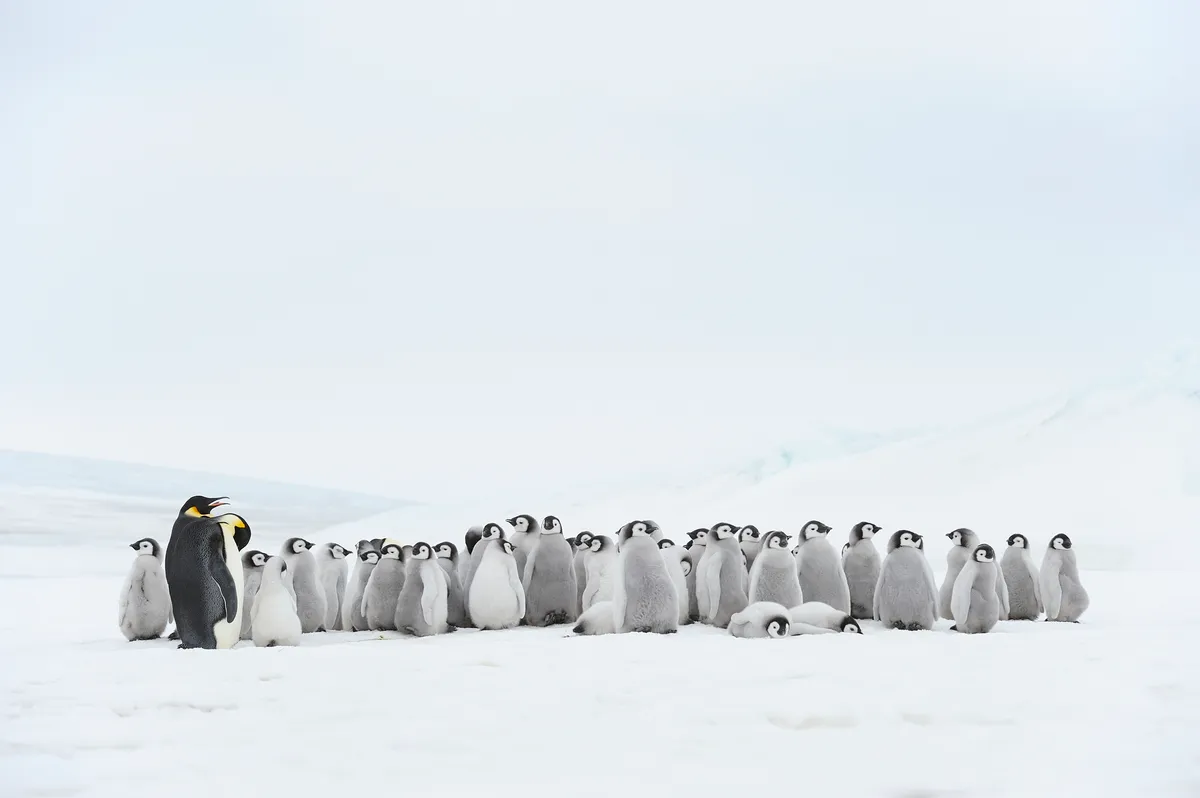
When does the mother come back?
The female returns to the colony in July-August, around hatching time, after two months at sea. She locates her partner, re-affirming the pair-bond with calls and touching of bellies before feeding her chick for the first time, or taking charge of the egg if it's not yet hatched. The male can then go off and feed - remember, he hasn't eaten for four months.
Does the male feed his chick?
Yes. As the chick gets bigger, both parents embark on fishing trips, leaving their youngsters in creches. Should a storm roll in when the parents are away, the chicks instinctively huddle. Chicks and parents undergo a greeting ritual after each feeding trip. A parent calls multiple times, only offering food if the chick responds in the correct way.
When will the young be ready to breed?
Emperor penguins can breed at the age of three years old, though will probably not start breeding until they are six. They can live for 20 years.
More species guides
- Snow leopard guide: habitat, diet and conservation
- Basking shark guide: how big they are, what they eat, and why they're endangered
- Puffin guide: what they eat, when they breed and best places to see puffins in the UK
- Dipper guide: why they dip, how they're adapted to swimming, and the threats they face
- Galápagos sea lion guide: how they hunt, and why they're endangered
Main image: emperor penguin on Snow Hill Island, Antarctica © Paul Souders/Getty
